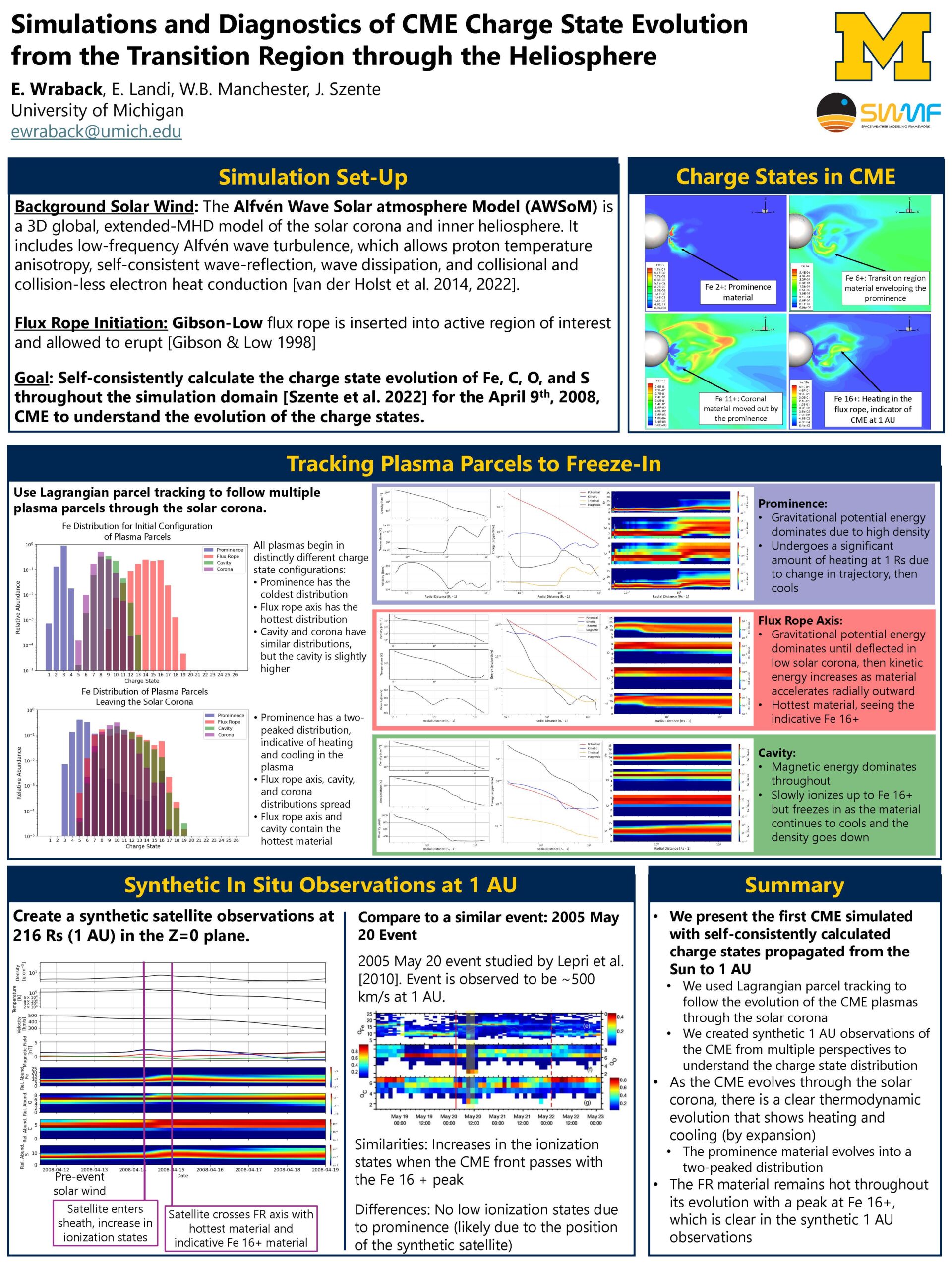Authors: Elizabeth Wraback (University of Michigan), Enrico Landi (University of Michigan), Ward Manchester (University of Michigan), Judit Szente (University of Michigan)
Charge states freeze-in very low in the solar corona and carry the information of their inner coronal properties through the heliosphere. In-situ measurements can be used to harvest such information and study early solar wind evolution and energetics. Similarly, we can study the complex structure of coronal mass ejections (CMEs) with in-situ charge state measurements, as the different components cross the path of the instrument. 3D global magnetohydrodynamics models allow (1) a direct connection between the inner corona and the in-situ CME observations and (2) to link the measured in-situ charge states to the energetics in the inner corona, where many processes driving the evolution occur. In this work, we use the Alfvén Wave Solar atmosphere Model (AWSoM) to simulate the April 9th, 2008, CME. This event was observed off-limb by Hinode/EIS and is the only CME observed with the full range of EIS spectral lines. Previous work has shown that the simulation of this CME compares well with the EIS observations low in the solar corona. We study the thermodynamic evolution of the CME’s plasma as the non-equilibrium charge states freeze-in to understand what is driving the plasmas’ evolution through the solar corona by tracking multiple plasma parcels. We also create synthetic in-situ observations throughout the heliosphere to compare the charge state distribution at different heliocentric distances and latitudes to address how the charge states vary through the CME’s structure.


